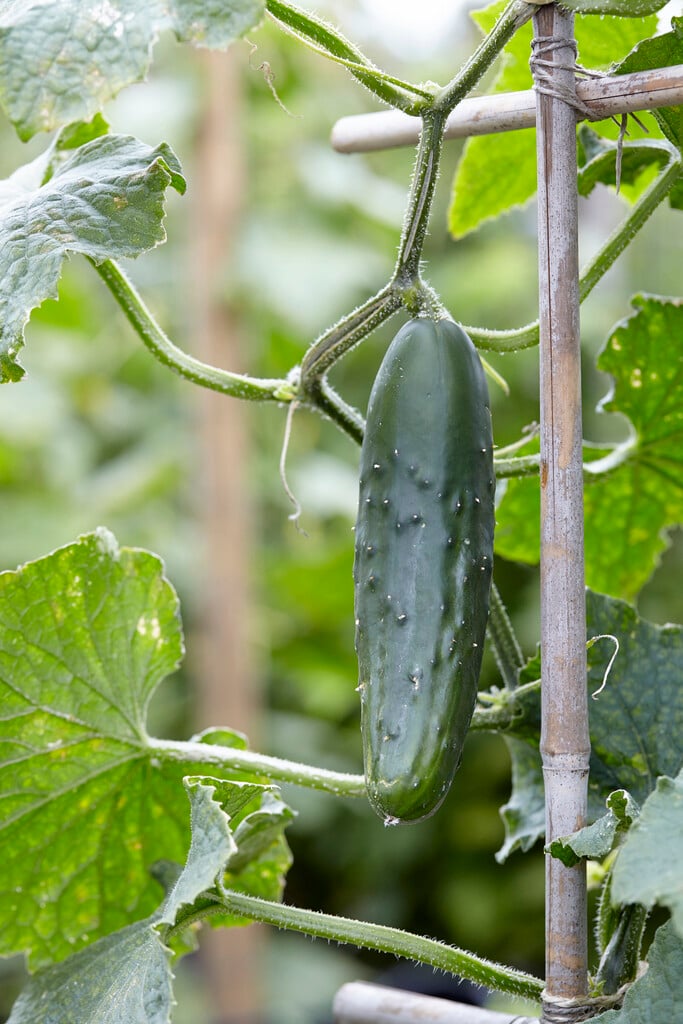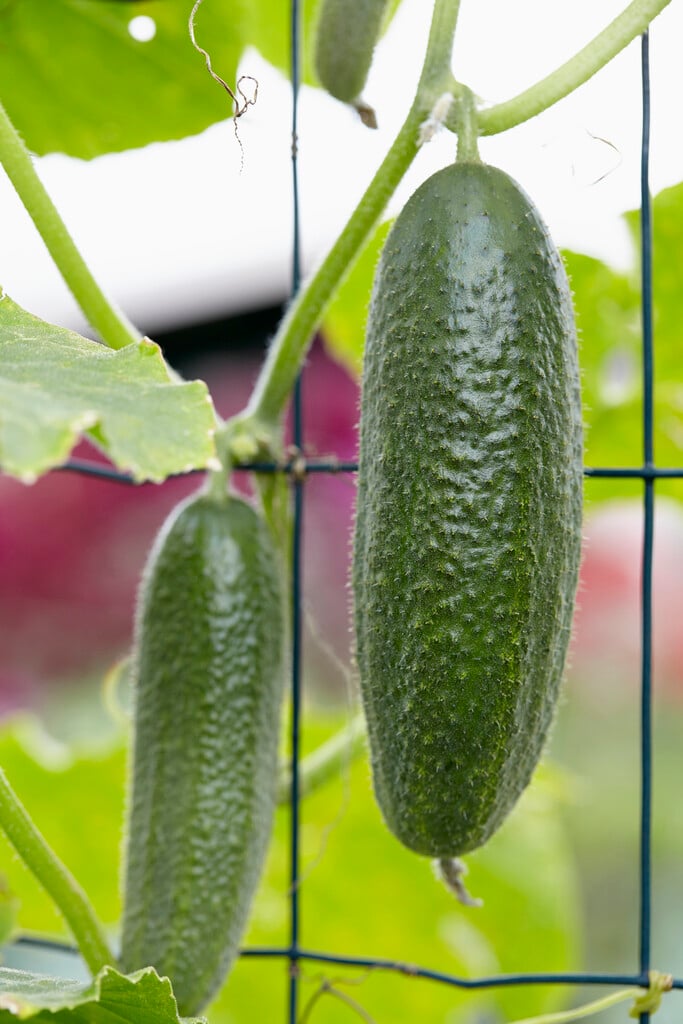Cucumis sativus
cucumber
The wild species of cucumber from which all other cultivars have been derived. It is a deciduous, annual, vining plant to 2m (6½ft) high, climbing by means of thin tendrils at the leaf nodes and producing yellow separate male and female flowers on the same plant the females after pollination, bearing the familiar, cylindrical, dark green, edible fruit, up to 40cm (16in) in length
Size
Ultimate height
0.1–0.5 metresTime to ultimate height
1 yearUltimate spread
1.5–2.5 metresGrowing conditions
Moisture
Moist but well–drainedpH
Acid, NeutralColour & scent
| Stem | Flower | Foliage | Fruit | |
| Spring | Green | |||
|---|---|---|---|---|
| Summer | Yellow | Green | Green | |
| Autumn | Green | |||
| Winter |
Position
- Full sun
Aspect
South–facing or West–facing
Exposure
Sheltered Hardiness
H1BBotanical details
- Family
- Cucurbitaceae
- Native to GB / Ireland
- No
- Foliage
- Deciduous
- Habit
- Climbing
- Potentially harmful
- Pets: Bitter fruit can be TOXIC if eaten - see the HTA guide to potentially harmful plants for further information and useful contact numbers
- Genus
Cucumis is a genus of twining plants with tendrils which includes cucumber, melons and gerkins. Around 30 species are native to Africa and 25 to India, Southeast Asia and Australia.
- Name status
Correct
How to grow
Cultivation
Grow in an acidic to neutral, moisture-retentive, well drained compost and a position in full sun, in a conservatory, greenhouse, or outdoors in summer in the UK. See cucumber cultivation for more advice
Propagation
Propagate by seed. See sowing vegetable seeds
Suggested planting locations and garden types
- Patio and container plants
- Edible fruit
- Conservatory and greenhouse
Pruning
Pinch out tips of leading stems once they have reached the top of thee trellis or growing support. Laterals should be pruned two leaves beyond where a fruit is developing to divert the plant's energy into the development of the fruit, rather than into the lateral's vegetative growth
Pests
May be susceptible to glasshouse whitefly
Diseases
May be susceptible to Cucumber mosaic virus and powdery mildews
Get involved
The Royal Horticultural Society is the UK’s leading gardening charity. We aim to enrich everyone’s life through plants, and make the UK a greener and more beautiful place.

